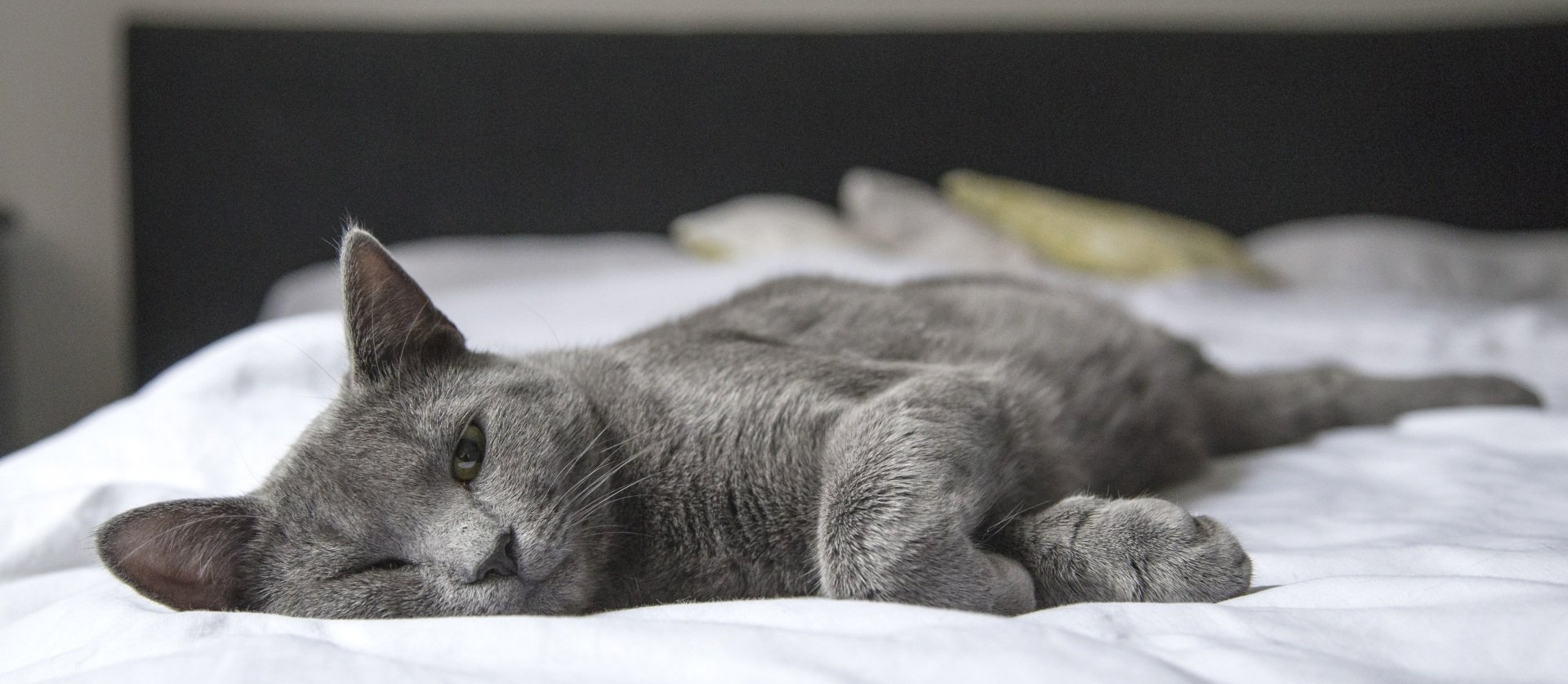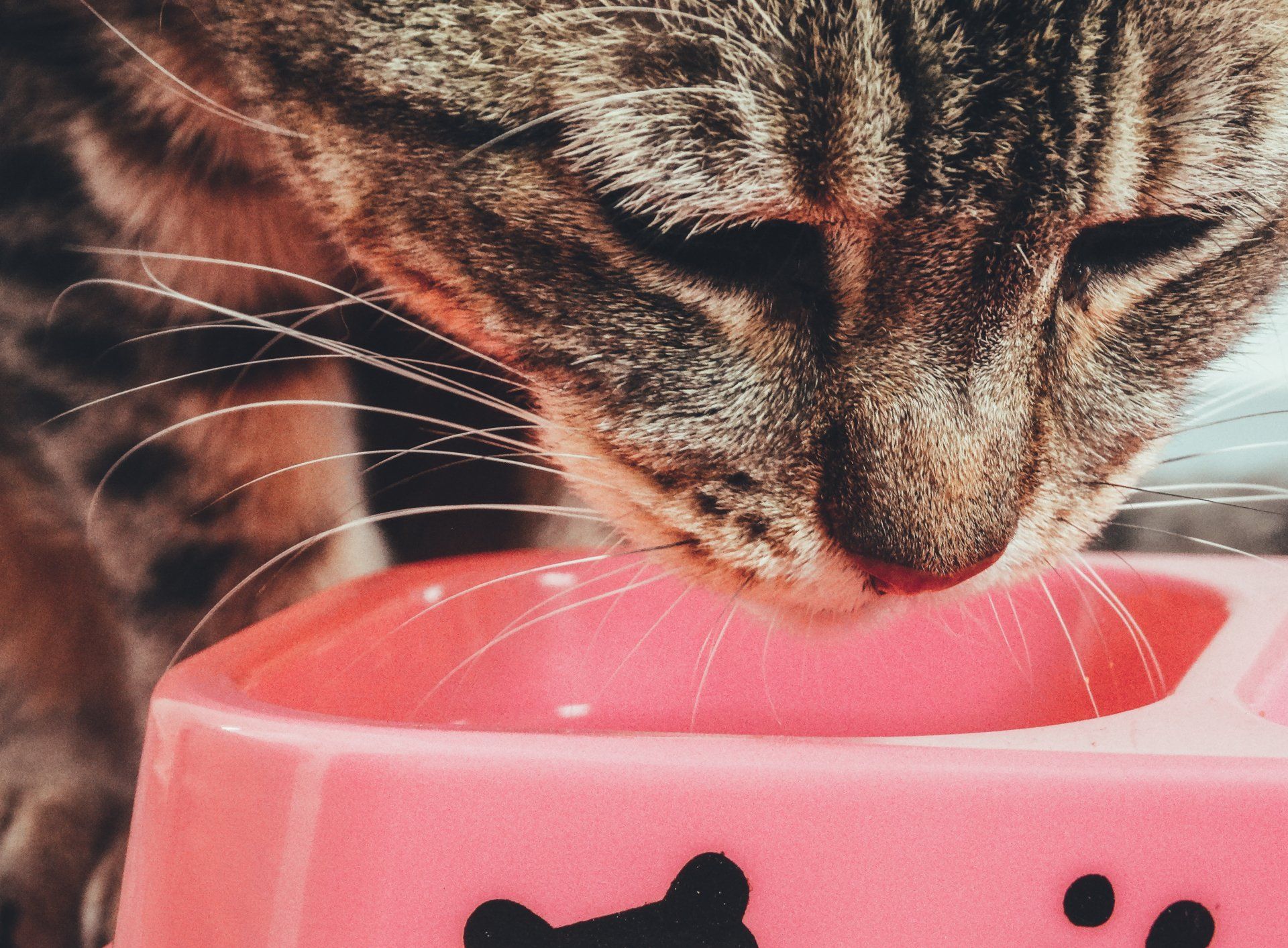Get in touch
555-555-5555
mymail@mailservice.com

Feline Hyperthyroidism
As cats get older, there are a few common maladies they can develop. One of the most common is hyperthyroidism, or an overproduction of thyroid hormone. The feline thyroid gland is found in the neck with each half of the organ on either side of the trachea (windpipe). Thyroid hormone is involved in regulating metabolism, so when there’s too much circulating in a cat, there are many secondary effects. Because of these secondary effects, it’s worth diagnosing and starting treatment. Below we’ll dig into more details on hyperthyroidism in cats to best understand how to successfully manage the disease.
What causes hyperthyroidism?
There may be a genetic component in the development of hyperthyroidism because certain breeds have been found to be lower risk including Siamese, Person, Burmese, Abyssinian, and Tonkinese. However, there are some risk factors that may be linked to the disease. These include eating a predominantly canned food diet, especially if it is fish-based. Older cats are also at increased risk.
Most cases of feline hyperthyroidism are caused by a benign change in the thyroid gland that results in increased thyroid hormone secretion. In rare cases there can be an underlying cancerous cause. Either way, the thyroid gland overproduces thyroid hormone, which puts a cat’s metabolism into overdrive. This means the heart has to work harder and beat faster, fat and muscle are lost even with a good appetite, and cats in general can just feel “off” and not like their normal selves.
Diagnosing hyperthyroidism
The most common complaint at home for a cat with hyperthyroidism is weight loss despite a ravenous appetite. Other signs include a change in behavior, gastrointestinal upset like vomiting and diarrhea, an increase in drinking and urinating, or just a cat generally not taking care of itself. Behavior changes can be extremely varied, but most commonly owners see hyperactivity, vocalizing more than normal, or a once nice cat who becomes grumpy or aggressive.
At the veterinary clinic, your veterinarian will start with a thorough physical exam. Common changes like weight and muscle loss, a fast or irregular heartbeat, a heart murmur, or even palpable enlargement of the thyroid gland may be found. High blood pressure can cause retinal detachment in the back of the eye and blindness.
Checking lab work is the next step for any older cat, but especially one with notable changes. Your veterinarian will recommend testing consisting of a complete blood count (CBC) to check red and white blood cells, a chemistry panel to assess blood sugar, liver and kidney values and electrolytes, a urinalysis, and a thyroid level (thyroxine or T4). Because of the secondary effects of hyperthyroidism, there may be changes on the blood work like a slightly increased red blood cell count or increased liver values. It is helpful to know if there is detectable pre-existing kidney disease. With this screening lab work other diseases like diabetes can be ruled out.
Usually diagnosing hyperthyroidism is straightforward - the T4 level is above normal. However, there is a “grey zone” which means the T4 came back technically normal, but is in the “high normal” range. If hyperthyroidism is suspected but the T4 is in the “grey zone”, an additional test called a free T4 (FT4) can be helpful.

Additional testing
Depending on your cat’s physical exam findings, lab work results, and planned treatment, there may be more testing recommended. For example, some hyperthyroid cats have an underlying urinary tract infection that a urine culture may be helpful in treating. Blood pressure measurement and imaging like chest x-rays or an echocardiogram (heart ultrasound) may give valuable information on the cardiovascular system. Some cats will have a special test called radioactive thyroid scintigraphy to identify exactly where overactive thyroid tissue exists in the body - some of which can be found in unusual locations outside of the neck!
Management of hyperthyroidism
Currently, there are 3 treatment modalities: medication, radioactive iodine therapy, and diet modification. The goal is to restore a normal thyroid level in the body and hopefully slow down or reverse some of the effects too much thyroid hormone has had on the body.
1. Medication
Lifelong medication is the most common treatment modality for hyperthyroidism. Methimazole is an antithyroid drug that can be given as a tablet (available as coated Felimazole® tablets or generic). This medication can also be specially made into a flavored chew, oral liquid or transdermal gel. Cats are given medication once to twice daily. To make sure the dose is right and ensure it is tolerated by your cat, follow your veterinarian’s recommendations on rechecking blood work. Generally, recheck blood work is performed several weeks after starting medication and then every 4-6 months.
Reasons to choose this treatment modality would be if a cat has other underlying illnesses, is very old, or if finances are of concern. Sometimes it is recommended to temporarily treat hyperthyroid cats with methimazole before a permanent, irreversible treatment is performed like radioactive iodine. This is to make sure there are no serious underlying conditions like chronic kidney disease.
2. Radioactive iodine therapy
This is considered the “gold standard” for treating hyperthyroidism in cats. Radioactive iodine works by destroying the abnormal, problematic thyroid tissue. After treatment, cats must be kept isolated for days to weeks because they urinate radioactive iodine. Some cats require additional treatment with radioactive iodine after the first dose. In some cases, cats become hypothyroid and require thyroid supplementation. Following recommendations for rechecking lab work is important to make sure thyroid control is appropriate over time.
3. Iodine-restricted diet
Hill’s y/d® is the only diet for the treatment of hyperthyroidism. It also fits the dietary needs of cats with early kidney disease, which includes most cats with hyperthyroidism. It takes about a month for the diet to work. Because it must be fed exclusively to work, this treatment modality may not work for all families - treats or any other food will negate any benefit from the diet. Lab work is checked about a month after starting the diet and then usually every 6 months long-term.
Surgery used to be an option for treating hyperthyroidism, but has fallen out of favor recently.

Long-term management
Medication or dietary management are not curative and are continued for the cat’s entire life. Once a normal thyroid level is achieved, some of the secondary effects of hyperthyroidism can be reversed. For example, high blood pressure and a fast heart rate can become normal.
However, it is common for kidney values to rise after finding an effective therapy for a cat’s hyperthyroidism. Uncontrolled hyperthyroidism can mask the signs of kidney disease, so once the thyroid is regulated, evidence of decreased kidney function can be detected even if pre-treatment blood work was normal. Despite this, it is important to treat a hyperthyroid cat even if the kidney values are worrisome - unregulated hyperthyroidism is much worse and can actually hasten the progression of chronic kidney disease.
Because cats with hyperthyroidism tend to be older, management often requires juggling multiple issues like chronic kidney disease, inflammatory bowel disease, or diabetes.
What about dogs?
Dogs with an increased thyroid level are more likely to have an underlying cancerous process than cats. If you feel a mass in your dog’s neck or have noticed weight loss or other abnormal signs at home, a physical examination and lab work are indicated. Management is different from feline hyperthyroidism in that the treatment is surgical for cancerous masses.



